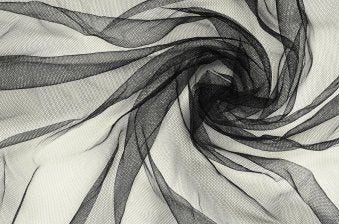-
How to Choose the Right Fabric for Your Window Treatments
How to Choose the Right Fabric for Your Window Treatments
 The right window treatments can totally transform any room in your home. Even if you are more concerned about the functionality of the window coverings, don’t ignore the opportunity to make a big design statement with new window dressings. Whether you’re making the coverings yourself or picking out fabric for custom-made window treatments, the following tips will help you choose the right fabric from your San Francisco fabric depot .
The right window treatments can totally transform any room in your home. Even if you are more concerned about the functionality of the window coverings, don’t ignore the opportunity to make a big design statement with new window dressings. Whether you’re making the coverings yourself or picking out fabric for custom-made window treatments, the following tips will help you choose the right fabric from your San Francisco fabric depot .Define the Mood of the Room
For starters, define the mood of the room that you are working in. For a formal space, heavy silk and velvet both provide richness and weight that give off a more luxurious feel. For a more casual space, such as a bedroom or office, consider billowy linen and crushed velvet. Cotton and wool blends can bring a crisp, neat feel in any room.
Consider the Room’s decor
Once you define the mood of the room, consider the decor and artwork that is most important to the overall look of the space. Once you identify the most important decor, decide if you want the window treatments to blend with the pieces or stand out in contrast. For blending, choose window treatment fabrics in the same tone as the decor but a few shades darker, or choose a non-dominant subtle color in the rooms such as a soft shade from the sofa or rug, for example. You have much more room for creativity when selecting bold fabric to stand out and pop.
Decide on the Function of the Window Treatments
Fabric weight is just as important as color and texture. To choose the right fabric, decide on the function of the window treatments themselves. For example, if you want to block out sunlight in an east-facing bedroom, the heavy fabric will be much better than light, airy fabric. Tell your San Francisco fabric supplier about your needs for help identifying the right types of fabric for your window treatments.
-
What is Tulle Fabric?
What is Tulle Fabric?
 Tulle is a fine mesh net fabric most commonly used to make wedding veils and embellish wedding gowns. Tulle can be made from a variety of natural and synthetic fibers, including silk, nylon, rayon, or cotton. Tulle comes in every color of the rainbow to suit any fashion or decorating project, including evening gowns, costumes, hats, lingerie, window treatments, and floral arrangements.
Tulle is a fine mesh net fabric most commonly used to make wedding veils and embellish wedding gowns. Tulle can be made from a variety of natural and synthetic fibers, including silk, nylon, rayon, or cotton. Tulle comes in every color of the rainbow to suit any fashion or decorating project, including evening gowns, costumes, hats, lingerie, window treatments, and floral arrangements. The fabric is named for the city of Tulle, France, where it was first made. This versatile fabric first became associated with weddings when Queen Victoria used it to create her bridal gown in 1840. Visit a fabric depot in San Francisco to see all the varieties of tulle available for your fashion or decorating project. If you are shopping for wedding fabric, look for discount fabrics to save money on your big day.
-
A Brief Overview of Synthetic Upholstery Fabric
A Brief Overview of Synthetic Upholstery Fabric
 If you’re unsatisfied with your furniture upholstery, you have two options: throw out the piece, or have your furniture reupholstered. It’s usually much cheaper to reupholster old furniture than it is to buy new items, and sometimes it’s the only thing you can do to avoid parting ways with antique furniture that’s been in your family for decades. When choosing upholstery fabric in San Francisco, you will need to choose between natural and synthetic fabrics. In this article we will highlight some of the different types of synthetics and briefly cover some of the benefits of using synthetic upholstery fabric.
If you’re unsatisfied with your furniture upholstery, you have two options: throw out the piece, or have your furniture reupholstered. It’s usually much cheaper to reupholster old furniture than it is to buy new items, and sometimes it’s the only thing you can do to avoid parting ways with antique furniture that’s been in your family for decades. When choosing upholstery fabric in San Francisco, you will need to choose between natural and synthetic fabrics. In this article we will highlight some of the different types of synthetics and briefly cover some of the benefits of using synthetic upholstery fabric. Acrylic
Colorfast and stain-resistant, acrylic is a popular synthetic upholstery fabric. It is also more resistant to fading and sun damage than natural fabrics, but it can be harder to clean. Blend acrylic with natural fabrics to add durability. Visit a fabric depot in the Bay Area to see acrylic samples in person.
Acetate
Acetate is among the softest of all synthetic fibers. It’s also wrinkle-resistant and rarely pills. Homeowners most often use acetate in window treatments because of its wrinkle-resistant draping qualities and the fact that it is less affected by humidity than other fabrics.
Nylon
Although nylon is among the toughest of all synthetic upholstery fabrics, it’s not particularly comfortable. Nylon’s continuous filament means it resists stains and static electricity incredibly well, but it can’t breathe and warms up from body heat quickly.
Polyester
Polyester is a synthetic fabric consisting of strands bonded together. Polyester is fade-resistant and wears well, but it is harder to clean than most other synthetic and natural upholstery fabrics. Like acrylic, polyester is often used as part of an upholstery blend to increase durability. You can also find polyester at a fabric depot in San Francisco that is great for making your own clothes at home.
-
Tips for Washing Silk Fabric
Tips for Washing Silk Fabric
Silk fabric is known for its luxury and strength, but it can still become dirty and stained. To keep your silk fabric looking like new, start by mixing a gentle laundry detergent with lukewarm water in a bowl. Place the silk garment in the bowl, agitate it in the water, and let it soak for 10 to 15 minutes. Let the garment dry flat on a towel. Watch this video to see how easy it is to care for your silk fabrics.
Silk fabrics can turn your fashion or decorating project into a fabulous work of art. Visit a discount fabric depot in San Francisco for great deals on silk fabric for window treatments, throw pillows, bedding, and more.
RECENT POSTS
categories
- Uncategorized
- Weddings
- Sewing
- Fabrics
- Discount Fabrics
- Upholstery
- Fabric Store
- Upholstery Fabric
- San Francisco fabric
- window treatment
- washing fabric
- dance outfit
- tulle fabric
- Discount Fabric
- Uniform
- Fabric Outlet
- Bridal Fabric
- Wedding Fabric
- Wedding Gown
- bridesmaid’s dresses
- Halloween costume
- Holiday Ideas
